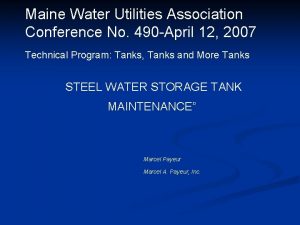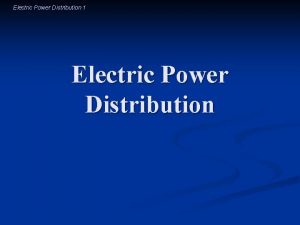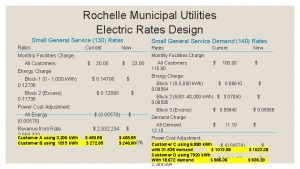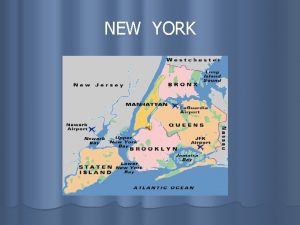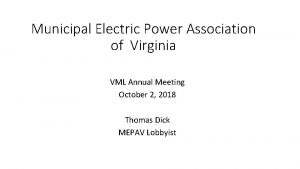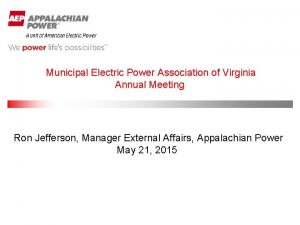Municipal Electric Utilities Association MEUANew York Municipal Power










- Slides: 10

Municipal Electric Utilities Association (MEUA)/New York Municipal Power Authority (NYMPA) IEEP Program - Electric Vehicle Activities July 2018

MEUA/NYMPA Member System Snapshot • 35 Systems – 101, 000 Utility Customers – in existence since 2001 • Largest include Fairport (17, 030) Plattsburgh (10, 200), Solvay (5, 600) • 15 systems have between 1, 500 – 5, 000 customers • 17 systems have under 1, 500 customers. • Diverse system locations (urban, rural, tourist destination, and university setting) • Individual tailored grassroots member programs

Electric Vehicle Program Objectives • Utilize individual member demonstrations to provide learning lessons for other systems within the association – Experimental Demonstrations • Utilize municipal electric utility staff to provide in-kind installation support to increase cost effectiveness and ensure reliable distribution system integration – Ensure Utility Coordination • Lead by example by targeting electric municipal fleet vehicles (bucket trucks, meter reader vehicles, maintenance staff) – Environmental Stewardship and Cost Control • Promote electric and hybrid technologies through targeted incentives and utilize high visibility areas to increase awareness and to promote local businesses – Raise Public Awareness • Leverage public funding and in-kind services to maximize opportunities – Minimize All-In Costs

Fleet Vehicles • The IEEP has supported the purchase of 30 hybrid vehicles utilized by meter readers, utility management staff, and maintenance workers • Additional purchases planned for 2018 & 2019.

Fleet Vehicles - Hybrid Bucket Trucks • The IEEP supported the incremental cost to convert 4 bucket trucks to hybrid technology in Solvay, Lake Placid, Arcade, & Penn Yan • Two additional conversions planned for 2018

Churchville, Spencerport, Fairport, Rouses Point • Supported the installation dual charging systems • Installed near high visibility areas adjacent to canal corridors and downtown areas • In-kind labor support provided by the municipal electric departments • Additional installation being planned in Churchville, Spencerport and Solvay

Village of Hamilton • Dual charging system installed at local hotel • Co-Funded with IEEP and private funding • In-kind labor support provided by Hamilton Electric Department

Lessons Learned & Going Forward Strategy • Continue with Fleet example… Hybrid bucket trucks and meter readers • EV Charging Stations have seen low usage …Target high visibility locations and publicize o Don’t rush all member systems… Not for every system at this time • Follow GRID interconnectivity processes… Manage closely to ensure proper siting within the distribution system to ensure reliability and efficiency • Continue to utilize grass roots strategy… Leverage in-kind funding and utility expertise

Other IEEP 2017 Activity • • • Completed over 1, 600 EE & renewable projects 35% LED (residential, commercial retrofit, streetlighting) 14% Residential Insulation Programs 12% Energy Star Appliance Incentives 10% Motor & Variable Speed Drive System Installations Approximately 51% of IEEP homes heat solely with electric while 81% use a combination of electric and other heat sources.

Questions?
 Kentucky municipal utilities association
Kentucky municipal utilities association Maine water utilities association
Maine water utilities association Power and utilities investment banking
Power and utilities investment banking Louisiana municipal association
Louisiana municipal association Wisconsin municipal treasurers association
Wisconsin municipal treasurers association International municipal lawyers association
International municipal lawyers association Triangle of power
Triangle of power New york state nurse practitioner association
New york state nurse practitioner association New york mental health counselors association
New york mental health counselors association New york state professional firefighters association
New york state professional firefighters association New york state association of transportation engineers
New york state association of transportation engineers

